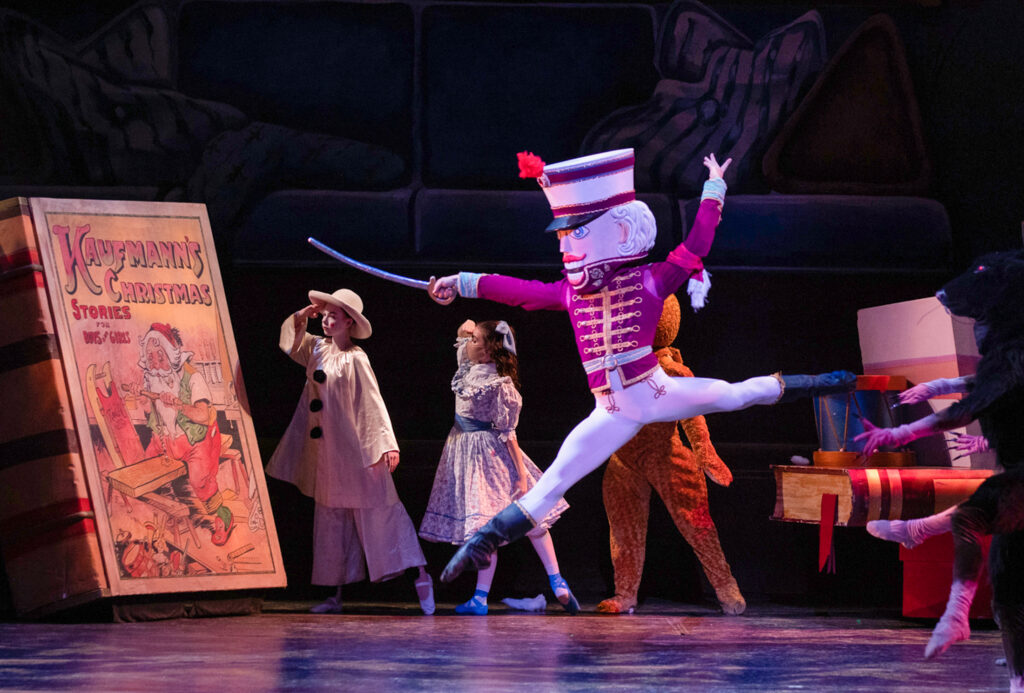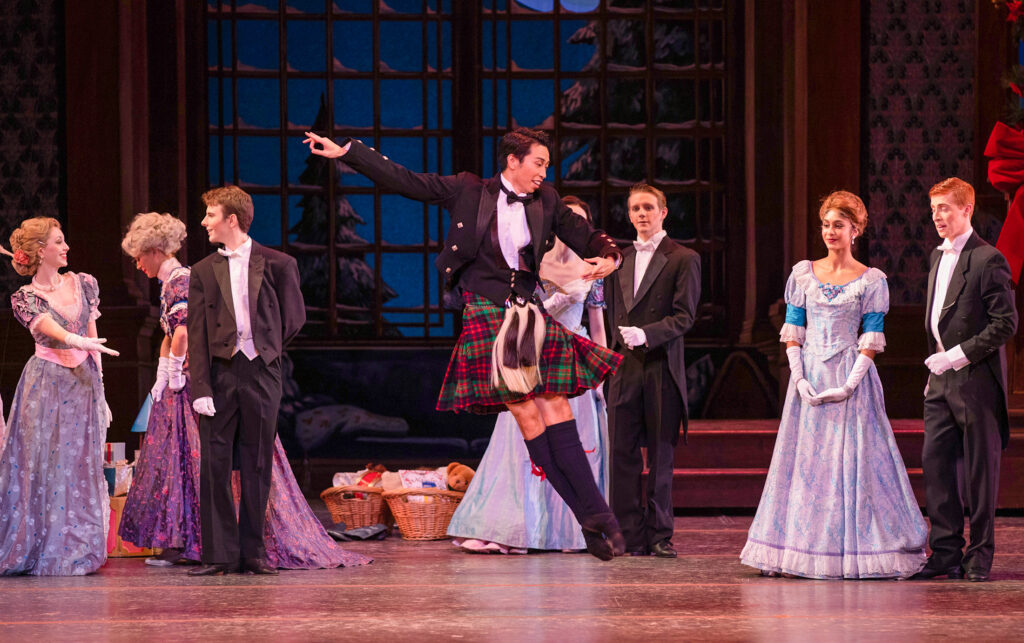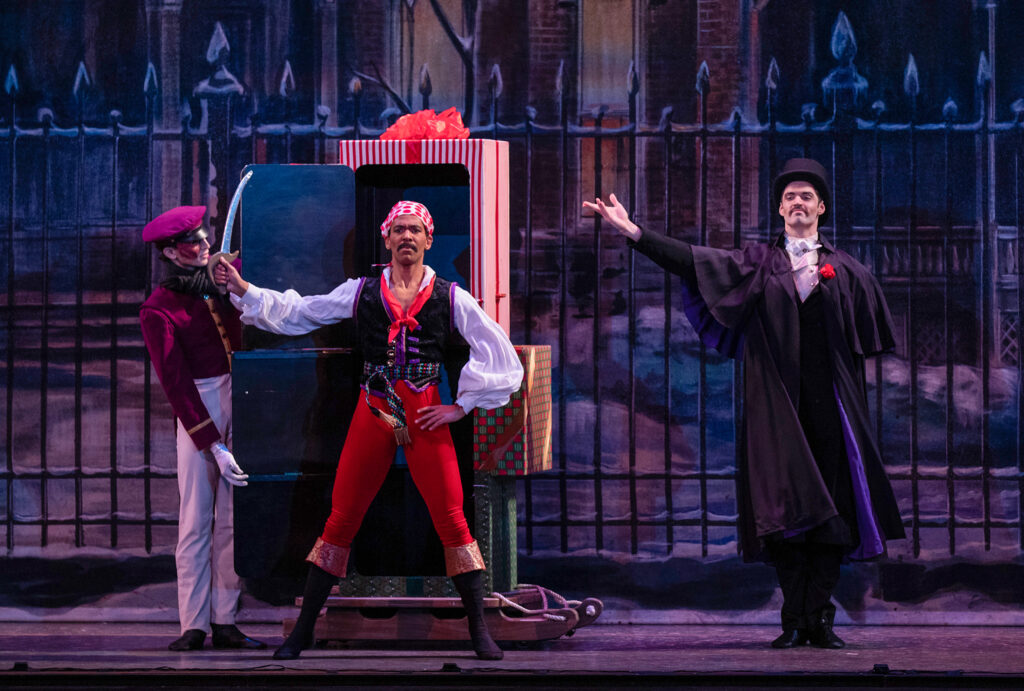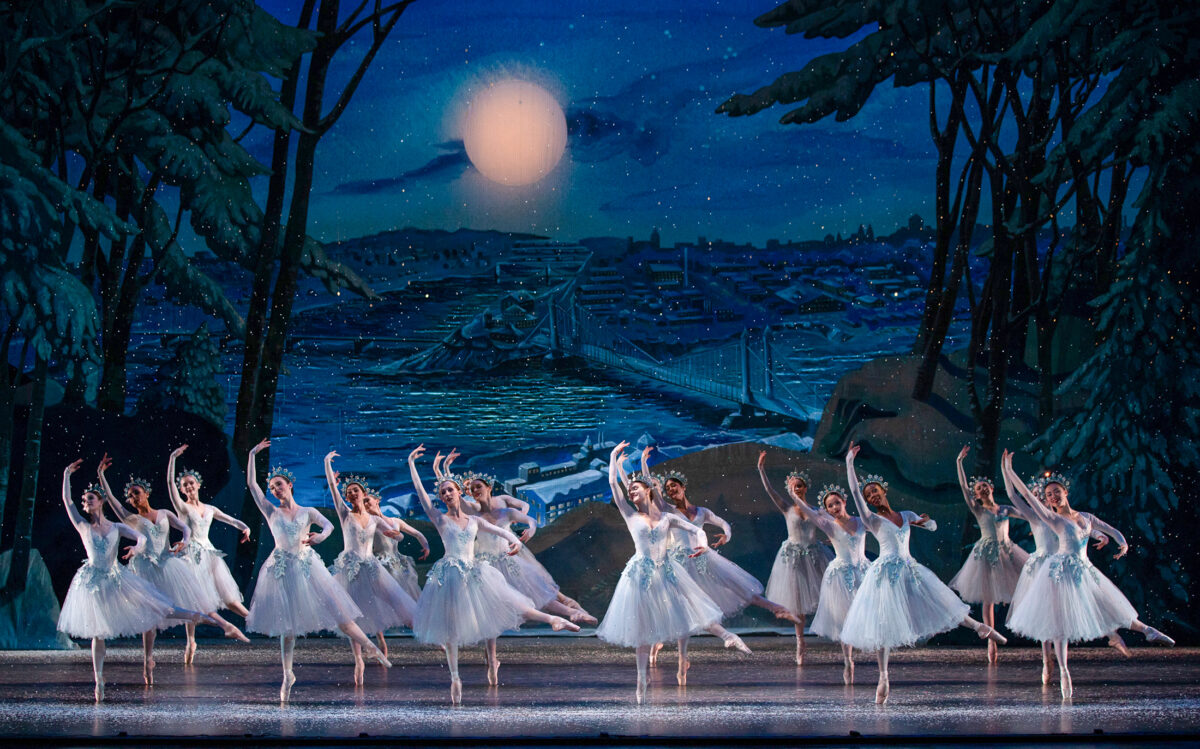What do the Pirates, Heinz ketchup and a dancing rat king have in common? All can be seen in Pittsburgh Ballet Theatre’s 53rd production of “The Nutcracker.”
This classic Christmas ballet set to music composed by Pyotr Tchaikovsky can be seen at the Benedum Center, Downtown, through Dec. 28.
The story follows the girl Maria and her Nutcracker Prince on a journey as they travel to the Land of Enchantment to see the Sugar Plum Fairy.
Audiences may recognize a Shadyside mansion and characters representing significant families in Pittsburgh history, Mr. and Mrs. Kaufmann and Mr. and Mrs. Heinz, on stage once the curtain lifts at the Benedum Center.
This is because PBT’s version of the ballet includes multiple nods and references to its hometown, making the performance a uniquely Pittsburgh experience.
In 2002, Terrence S. Orr, PBT’s artistic director at the time, conceived and choreographed PBT’s version of “The Nutcracker” to include an enhanced storyline, new choreography and a Pittsburgh theme. It’s been performed during the holiday season by the company every year since.
According to Kati Gigler, PBT’s acting executive director, Orr stumbled upon a copy of “Kaufmann’s Christmas Stories” from the early 1900s and “was captivated by the vision it presented of turn-of-the-century Pittsburgh during the holiday season.
“This is the 20th year that we have produced our Pittsburgh ‘Nutcracker,’ and audiences still love it,” Gigler said.

This year, “The Nutcracker” boasts 13 Pittsburgh connections. One of them is a large ornate clock that hangs above the stage, in reference to Kaufmann’s department store clock. Meeting under Kaufmann’s clock was a Pittsburgh tradition for many. Though the department store is long gone, the clock can still be found above Fifth Avenue and Smithfield Street, Downtown.
The show opens with an image of a grand home. It’s the F.W. McKee mansion, which was located on Fifth Avenue in Shadyside. McKee was an attorney whose father was one of the pioneer glass-manufacturing firms in Pittsburgh, McKee and Brothers. The stately mansion was torn down in the mid-1900s to create space for apartment buildings. The fence in the rendering is a replica of the one that stands around the historic Henry Clay Frick mansion.
In Act One, protagonist Maria and her family gather in their Shadyside home for a holiday party. At the party, McTavish performs a dance in a kilt, both character and clothing representing Scottish Pittsburgher Andrew Carnegie. The green and red plaid in McTavish’s kilt is the official Carnegie family plaid. PBT received special permission to use it in the costume.
Following the party, toys such as a penguin with a hockey stick and a pirate doll come to life in a nod to Pittsburgh sports teams. Additionally, if you happen to attend a performance that lands on a Steelers game day, you may be able to catch a glimpse of the rats waving Terrible Towels during their battle scene as they cheer on the Rat King.
The forest Maria travels in during the snow scene at the end of the first act is set on Mount Washington circa 1906. “The Point” can be seen in a backdrop depicting the three rivers converging, in addition to a couple of bridges.
In Act Two, Maria and the Nutcracker Prince enter the Land of Enchantment, a scene outfitted with lights and bright colors. Gigler noted that the carousel and roller coasters on the backdrop are a nod to Kennywood and Luna Park, a North Oakland amusement park from the early 1900s.
Dancing bugs and butterflies are inspired by another Pittsburgh institution, the National Aviary.
“We include lists of Pittsburgh connections on our production guides for children and adults, and audiences still have so much fun trying to count them all,” she said.

Shows began on Dec. 9. In total, the company will perform 21 times this month. Perhaps PBT’s most anticipated show, it is also one of the company’s favorites. Gigler said there is often joy and exuberance in the air this time of year for everyone involved.
“Administrative and artistic folks alike of course always caution new team members that ‘Nutcracker’ is a marathon and not a sprint, but our production is so much fun, and the Benedum feels so magical in December, that we really love this time of year,” she said.
And indeed a marathon it can be. Starting each fall, the company logs over 350 rehearsal hours before the curtain rises on opening night. More than 150 costumes and more than 1,500 costume accessories are prepared by PBT’s costume shop for this show, and nearly 100 dancers (including company members and PBT school students) are involved in each performance. In fact, each company artist performs an average of eight different roles in the production.
“We call it ‘Nutcracker season’ for a reason,” Gigler explained. “While it often feels like the start of the season is early October … our production team is working on elements of the production quite often throughout the year, particularly the costumes, which can always use a little TLC.”
This year, more than 90% of eligible PBT school dancers are participating in the production.
“Our entire team views the Benedum as home this time of year, and it is very special to be able to experience everything from company class on the stage to cleaning up after the boutique following a rush on nutcrackers and plush sheep,” Gigler said. “Last weekend it snowed on a two-show day, and most of us spent the break wandering the People’s Gas Holiday Market or sipping on something warm at our favorite spots near the theater. There’s really nothing else like it during our mainstage season.”
Also this year, fans of “The Nutcracker” will notice slight changes and variations to the dance lineup in Act Two. Many traditional productions include the celebration of sweets where different candies and treats are represented through dances related to their country of origin. This often includes Chocolate (Spanish Dance), Tea (Chinese Dance), Coffee (Arabian Dance) and Trepak (Russian Dance).
These dances often incorporated costumes of choreographic elements that played on stereotypes of said cultures.
Attendees of the 2022 “Nutcracker” will see in their programs a note from the company on how PBT has selected new names for the “nationality” dances and continues to review how to present “The Nutcracker” to audiences. According to the program, “This season, new names were selected for Act Two dances to reflect the tone of each piece’s choreography itself: Jubilation (formerly Spanish), Joy (formerly Chinese), Elegance (formerly Arabian) and Exuberance (formerly Russian).”
“The original 1892 production of ‘The Nutcracker’ titled the divertissement pieces after countries or cultures, and foods, like the Chinese/Tea variation,” Gigler said. “Our version choreographed in 2002 incorporated elements intended to honor represented cultures.”
Gigler explained how some elements were created with community allies as the dragon head used in “Joy” was built in Taiwan and at a ceremony for the 20th anniversary of sister cities Pittsburgh and Wuhan, China, to celebrate Pittsburgh’s Chinese American community.
This production of “The Nutcracker” is dedicated to Jay Romano, PBT’s chief financial officer, who died in October after 40 years with PBT.
“Jay loved Pittsburgh and understood how our arts community makes the city so unique,” Gigler said. “Our production of ‘The Nutcracker’ celebrates Pittsburgh and that spirit of community, and so our leadership team wanted to make sure to dedicate this year’s show to Jay’s memory.
“The first time I had the chance to attend Dance/USA’s annual conference, I was there with Jay, and it was like being friends with the most popular kid in school,” she said. “We stayed out late after the opening reception in downtown Cleveland, and it was one of the first nights I really felt like I belonged in arts leadership. I think Jay made everyone feel welcome, and I know we hope to keep that legacy at PBT to celebrate Jay’s memory.”

Hannah is a reporter at the Pittsburgh Post-Gazette, but she's currently on strike. Email her hwyman@unionprogress.com.


